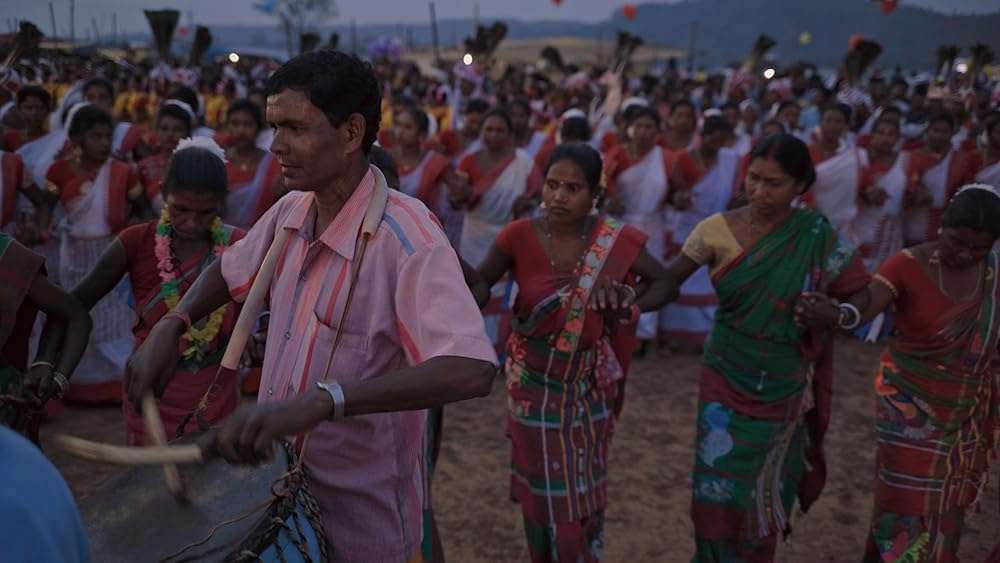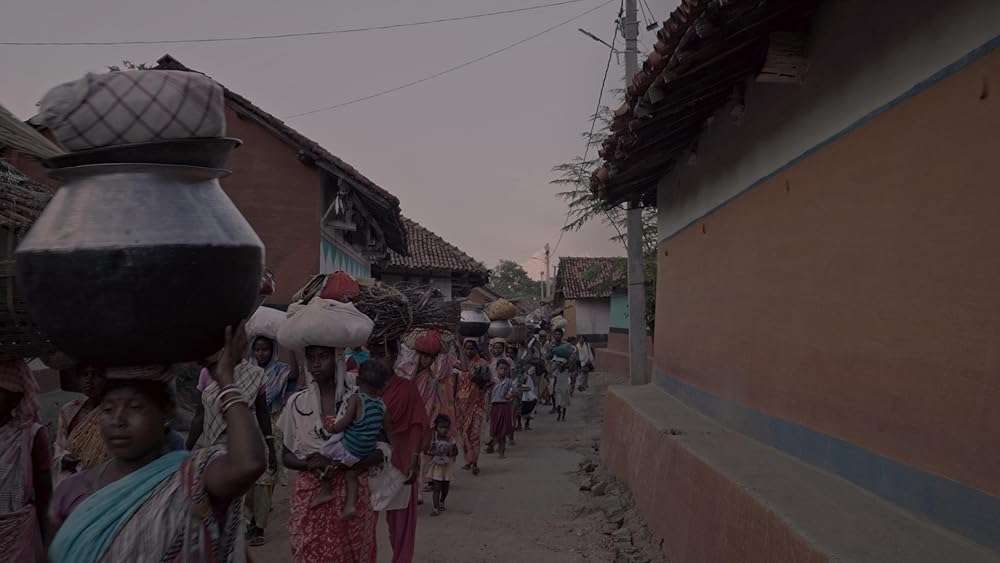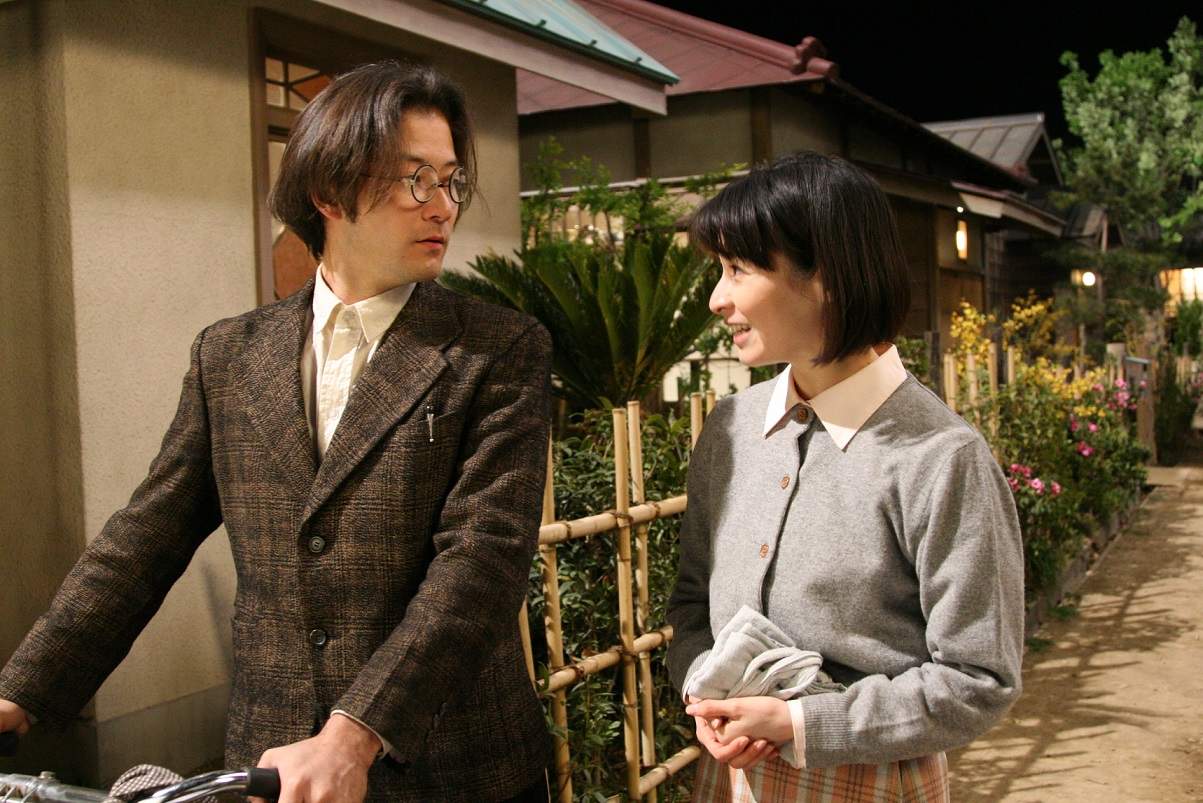One of the biggest celebratory occasions in Jharkhand is the annual Chhath Puja, popular as the only surviving pre-Vedic festival that honors the sun and the river without any elaborate rituals. The riverbanks are cleaned up, the streets are lit wonderfully, and offerings are made to the setting and rising sun. I have many memories associated with Chhath, and some of them are tied to the riverbank that we often use to make the offerings, which is situated amidst the steep natural hills of Narwa in Jamshedpur, surrounded by heavily forested uranium mines.
It is a place that is opened for public visiting and used only once a year, during Chhath. During that time, opening the car window to look at the beautiful Santhal hutments that were to be seen on both sides of the narrow roads was a favorite memory. During this particular time of the year, which coincides with their own celebration of the Sohrai festival, they beautifully decorated their walls with vibrant colors and DIY objects such as CDs and banana peels.
However, over the years, the hutments have started to disappear, and there may be one or two left. Perhaps, by now, that land stands empty. In his insightful new feature film, Dharti Latar Re Horo (Tortoise Under the Earth), Shishir Jha tackles the growing impact of government-funded technological exploitation directed against traditional, culture-rooted beliefs.
Before it starts telling the story of its choice, the film opens with the scenes of a community in rejoicing. This is the Santhali community, which lives in tranquil harmony with the thorny bushes and hilly forests of the uranium mining areas situated in Jadugora, Godda, and other associated areas of Jharkhand. Being primarily the followers of the Sarna religion, they have their own script and a rich multitude of folklore and traditions, aligning with their immediate gratitude for sacred groves, edible leaves, mighty trees, and the soil on which they walk. It is an Indigenous community that deserves a self-sustaining space in which they can perfectly thrive.

And yet, if you look them up on the internet, books, and other contemporary media, their existence now has become an endless story of striving to breathe. Displacement is more of an inevitable truth, it is a looming threat decades ago. Their unique rituals and unconventional worldview are withheld by a lack of legal standing in their own country, in which they are made to choose from the more mainstream and limited choices that would never reflect their actual standing.
Thanks to the increasing migration, the young are forgetting they have their own language with a fully formed script (called Ol Chiki). Hindi, English, or the ‘regional’ language are becoming the only way out. In a rapidly modernizing world where cultures and practices are evolving, the Sarna code faces dissolution.
Director Shishir Jha, in his film, chooses to depict this from a perspective that balances its ecological and familial aspects. The culture thrives through hours of recorded footage and wonderful sparks of unedited folk music. The necessity of migration due to political pressure and climate change becomes the crux of a marriage story, in which a man (Jagernath Baskey) and his wife (Murli Baskey) who have received the notice to abandon their hutment, struggle to grieve in parallel.
Both of them have visibly different coping mechanisms. Initially, the woman seems to be the most affected, constantly looking at the old pictures and mumbling words and songs to herself, as if the spirit of her girl looms around. However, mourning takes a more pressing form for the man. He has gotten over his sense of denial, yes, but he insists on clinging to the land rather than moving to the government-provided settlements like everybody else around him.
Of course, it is also his insistence on sticking to his birthplace and his ancestral roots. It is not even resistance against the governmental schemes, for his poverty doesn’t exactly condition him for that. The rigidity, then, lies in the muted emotional envelope of their married life. The land becomes the silent therapist, providing them with the closure necessary for survival.

Jha’s unconventional and patient treatment of the story feels like a riff on the phrase ‘fiction that feels like a documentary,’ which is flung around by moviegoers without a sense of responsibility. At the same time, it is a strange concoction of the accessible and inaccessible- the story follows the familiar trajectory of a grieving middle-aged couple’s final few attempts to hold on to their faith and the only place they have known to be their home.
Seen through the lens of the community’s spirit and actions, the film feels like an archive of collective memory, with its people appearing more like characters from woven folklore than real individuals. The closing stretch is absolutely imaginative in that regard. Essentially a journey of finding and losing oneself in layers of dilemma, the film ties all its loose threads in the stillness of abandoned trees, bushes, and cliffs.
However, it is not perfect in the sync between the two artistic mediums. At times, you would wish that the film could stick to one flavor of storytelling rather than switching from a conventional marriage story to a slow-burning eco-fable. The performances by Jagernath Baskey and Murli Baskey are especially undercooked, and their presence makes the film feel like a stage production, especially during the out-of-place poetic monologues which could have landed otherwise with a passionate delivery.
In fact, it wouldn’t be unfair to say that they are the only weak links in the film. Yet, the way Jha positions their non-actorly ‘acting’ has an earthy rusticity to it. While this does not take away from the fact that it still looks and feels odd to see and hear them mouthing those lines, their performative edge becomes the background for the uneasy stillness of the surroundings, which only amplifies the film’s call to action and its mournful plea for consideration. Overall, it is a beautiful and constantly engaging film about a community’s joys and the eternal pain caused by separation from the roots.




![The Fabulous Filipino Brothers [2021] Review – A Personal Comedy That Fails To Hit The Right Spots](https://79468c92.delivery.rocketcdn.me/wp-content/uploads/2022/02/The-Fabulous-Filipino-Brothers-2021-768x432.jpg)

![Polytechnique [2009]: A Ponderous Glimpse into the Layers of Misogyny](https://79468c92.delivery.rocketcdn.me/wp-content/uploads/2016/03/Polytechnique-film-images-a77103a9-e80f-4b1b-9733-442e828f3f9-768x432.jpg)

